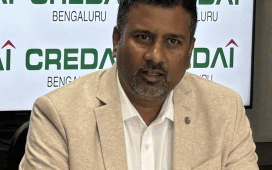Also, urban and metropolitan markets account for 80% of term deposits, indicating the skewed nature of the deposit mobilisation pattern in the country. Metropolitan markets are those with a population of over one million and urban centres with over 100,000 population. Nearly 44% of the term deposits as of end September were of ₹1 crore and above; on an incremental basis, they accounted for over half of the term deposits during the first half of the current fiscal year, indicating that the savings are generated in pockets with higher levels of economic activity.
“Large Indian metro centres have traditionally contributed more to bank deposits as they are hubs of economic activity with a large population and growing disposable income,” said Sonali Kulkarni, lead, financial services, at Accenture in India. “The top 30 centres in India have contributed nearly 55% of deposits, and this has remained stable for the last decade. The next 100 locations have seen significant growth – albeit on a relatively smaller base – driven by growing income levels and increased banking penetration.”
Private banks have a marginally higher concentration of deposits in metropolitan markets compared with public sector banks and they have gained a 2-percentage-point market share from public sector banks in the first half of this fiscal year, according to a report by Kotak Mahindra Bank.

Data also show private banks are making steady inroads into term deposits.Private sector banks tend to have an edge over their public sector counterparts with respect to technology. Most depositors, especially the younger generation, are looking for a proposition that offers them competitive interest rates along with ‘anywhere and anytime’ DIY or digitally assisted banking interfaces and features like instant account opening, seamless KYC processes, and flexible deposit models that make it easy for them to invest. “Banks – be it the public sector or the private sector – need to pivot to mobile-first experiences and use interactive formats in local languages to connect with potential young depositors across urban and rural India,” said Kulkarni











